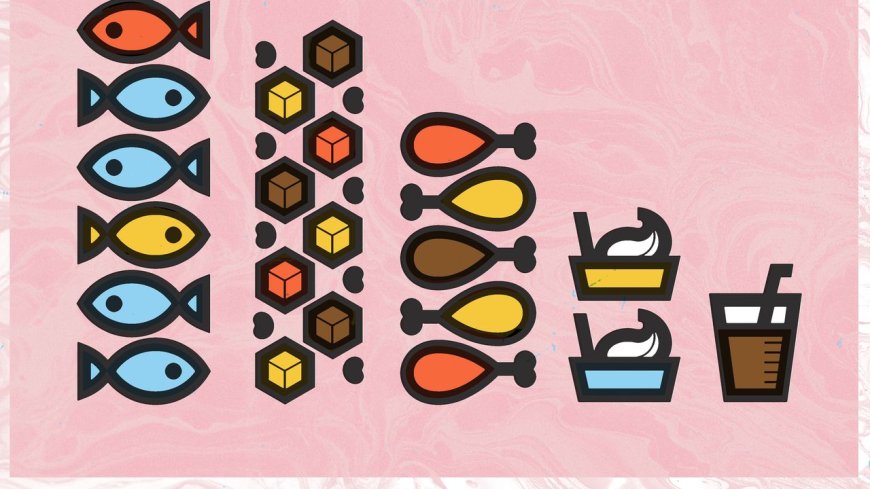7 Easy High-Protein Meals That Aren't Chicken
WellnessFrom quinoa bowls to tofu, these low-effort dishes will help you get your protein fix the natural way.By Emily LaurenceJune 27, 2025Michael HoutzSave this storySaveSave this storySaveAll products featured on GQ are independently selected by our editors. However, we may receive compensation from retailers and/or from purchases of products through these links.When you’re trying to hit your protein goals, it’s easy to get into a rut of cycling through the same handful of high-protein meals. But by the time you sit down to your third chicken dinner, you’re likely yearning for a bit more variety.You don’t have to spend hours meal prepping, recipe hunting, or cooking to avoid eating the same high-protein meals on repeat. And you don’t have to add eggs to everything either. You just have to know what foods to stock your kitchen with that require minimal effort to use and a few key meal-building guidelines. Here are seven dietitian-approved ways to make high-protein meals for when you’re short on energy and time.What’s a High-Protein Meal?Ideally, every meal includes protein. So what’s the difference between a normal meal and a high-protein meal? Registered dietitian Andy De Santis defines a high-protein meal as one that covers at least a third of a person’s protein requirement. So if you’re aiming to get 100 grams of protein a day, that would mean a high-protein meal should have at least 33 grams of the macronutrient.This is where it’s important to remember that protein needs vary based on someone’s age, gender, activity level, and health goals. The 2020–2025 Dietary Guidelines for Americans recommends a daily protein goal of 56 grams for men aged 19 and up. For more specific guidelines, a common calculation used to figure out one’s individual protein goal is 1 gram per pound of bodyweight. Trying to grow your muscles? Aim for 1.5 to 2 kilograms of protein per kilogram of bodyweight.When do high-protein meals come in handy? In Western culture, breakfast tends to be pretty light, so Michael Reavis Jr., the lead sports dietitian at Fit With Food, says that having a high-protein lunch and a high-protein dinner can make up for a morning meal where you might have only had a few grams of the macronutrient.That said, there is a case for making breakfast a high-protein meal.“Having protein at breakfast has been linked to increased satiety and better concentration throughout the day and may also contribute to a reduction of unhealthy snacking in the evening,” says registered dietitian Kristin Kirkpatrick. Eating a high-protein meal can also be beneficial after resistance training to help with muscle growth and repair, adds Kirkpatrick.Regardless of when you eat your protein-packed dish, your body will benefit. So how do you consistently make it a habit? That’s where the below easy high-protein meals come in handy.1. Choose whole foods over ultra-processed onesThere’s a time and place for protein bars and powders, but Kirkpatrick warns against relying on them too much—especially when it comes to your meals.“For example, eggs may be a preferred source more than an ultra-processed protein bar or drink,” she says. While protein-branded packaged foods can seem like a shortcut, you’ll get more nutritional density from whole foods sources, so make them the cornerstone of your meals.2. Don’t forget about plantsDe Santis says that a lot of people equate high-protein foods with animal sources. And while eggs, chicken, and beef are all high in the macronutrient, he says not to overlook plant-based sources.“Combining plant-based proteins—like tofu, chickpeas, and lentils—is an underrated way to make a high-protein meal,” he says.“A new study found that both plant-based and animal-based protein sources provided benefit when it comes to muscle gain,” Kirkpatrick says, adding that plant-based sources also have fiber and other nutrients that benefit health.An added advantage is that plant-based proteins typically cook quicker than animal-sourced proteins. (If you even need to cook them at all.) Another reason why stocking your kitchen with them is a good move.3. Make quinoa your go-to grainIf you eat a lot of rice, using quinoa instead will instantly double the protein content of your meal. De Santis says it’s one plant-based protein source in particular many people overlook. Can it be considered a high-protein food on its own? No. But he says that a cup of quinoa will add eight grams of protein to your meal, which is double what a cup of white rice would bring.4. Combine Greek yogurt and protein powderWe told you protein powder had its time and place, and this is it.“Combining Greek yogurt with protein powder and adding some toppings like nuts is one of the easiest ways to get a large amount of protein,” De Santis says.It takes literally one minute to make and you can have it in the morning or after a workout. He adds that combining cottage cheese and protein powder works too.5. Prioritize foods that hit more than one nutrient bu

All products featured on GQ are independently selected by our editors. However, we may receive compensation from retailers and/or from purchases of products through these links.
When you’re trying to hit your protein goals, it’s easy to get into a rut of cycling through the same handful of high-protein meals. But by the time you sit down to your third chicken dinner, you’re likely yearning for a bit more variety.
You don’t have to spend hours meal prepping, recipe hunting, or cooking to avoid eating the same high-protein meals on repeat. And you don’t have to add eggs to everything either. You just have to know what foods to stock your kitchen with that require minimal effort to use and a few key meal-building guidelines. Here are seven dietitian-approved ways to make high-protein meals for when you’re short on energy and time.
What’s a High-Protein Meal?
Ideally, every meal includes protein. So what’s the difference between a normal meal and a high-protein meal? Registered dietitian Andy De Santis defines a high-protein meal as one that covers at least a third of a person’s protein requirement. So if you’re aiming to get 100 grams of protein a day, that would mean a high-protein meal should have at least 33 grams of the macronutrient.
This is where it’s important to remember that protein needs vary based on someone’s age, gender, activity level, and health goals. The 2020–2025 Dietary Guidelines for Americans recommends a daily protein goal of 56 grams for men aged 19 and up. For more specific guidelines, a common calculation used to figure out one’s individual protein goal is 1 gram per pound of bodyweight. Trying to grow your muscles? Aim for 1.5 to 2 kilograms of protein per kilogram of bodyweight.
When do high-protein meals come in handy? In Western culture, breakfast tends to be pretty light, so Michael Reavis Jr., the lead sports dietitian at Fit With Food, says that having a high-protein lunch and a high-protein dinner can make up for a morning meal where you might have only had a few grams of the macronutrient.
That said, there is a case for making breakfast a high-protein meal.
“Having protein at breakfast has been linked to increased satiety and better concentration throughout the day and may also contribute to a reduction of unhealthy snacking in the evening,” says registered dietitian Kristin Kirkpatrick. Eating a high-protein meal can also be beneficial after resistance training to help with muscle growth and repair, adds Kirkpatrick.
Regardless of when you eat your protein-packed dish, your body will benefit. So how do you consistently make it a habit? That’s where the below easy high-protein meals come in handy.
1. Choose whole foods over ultra-processed ones
There’s a time and place for protein bars and powders, but Kirkpatrick warns against relying on them too much—especially when it comes to your meals.
“For example, eggs may be a preferred source more than an ultra-processed protein bar or drink,” she says. While protein-branded packaged foods can seem like a shortcut, you’ll get more nutritional density from whole foods sources, so make them the cornerstone of your meals.
2. Don’t forget about plants
De Santis says that a lot of people equate high-protein foods with animal sources. And while eggs, chicken, and beef are all high in the macronutrient, he says not to overlook plant-based sources.
“Combining plant-based proteins—like tofu, chickpeas, and lentils—is an underrated way to make a high-protein meal,” he says.
“A new study found that both plant-based and animal-based protein sources provided benefit when it comes to muscle gain,” Kirkpatrick says, adding that plant-based sources also have fiber and other nutrients that benefit health.
An added advantage is that plant-based proteins typically cook quicker than animal-sourced proteins. (If you even need to cook them at all.) Another reason why stocking your kitchen with them is a good move.
3. Make quinoa your go-to grain
If you eat a lot of rice, using quinoa instead will instantly double the protein content of your meal. De Santis says it’s one plant-based protein source in particular many people overlook. Can it be considered a high-protein food on its own? No. But he says that a cup of quinoa will add eight grams of protein to your meal, which is double what a cup of white rice would bring.
4. Combine Greek yogurt and protein powder
We told you protein powder had its time and place, and this is it.
“Combining Greek yogurt with protein powder and adding some toppings like nuts is one of the easiest ways to get a large amount of protein,” De Santis says.
It takes literally one minute to make and you can have it in the morning or after a workout. He adds that combining cottage cheese and protein powder works too.
5. Prioritize foods that hit more than one nutrient bucket
You know you need other nutrients besides protein, right? Reavis says that fiber, fats, and carbs are important too. To make meal making easy, he recommends using foods that fill more than one nutrient bucket. For example, he points out that beans have fiber, carbs, and protein. And fish has protein and unsaturated fats. The more you can use multi-nutrient foods like these, the fewer ingredients you’ll need to round out your meal.
6. Go fish
Just like meat, fish is a complete protein and it has just as much of the macronutrient. Both De Santis and Reavis recommend it because it’s also high in omega-3 fatty acids, which are important for heart health and brain health. It’s easy to find ready-to-eat too. You can stock up on traditional tuna packets (which come in a whole range of flavors) or you can go for other ready-to-eat tinned seafood, like salmon or lobster.
7. Pick a pasta that has protein
Have you noticed that all the different types of pasta take up at least half of an aisle at the grocery store? It’s not just because of different shapes either. Reavis points out that a lot of them are made from plant-based proteins, like chickpeas, edamame, lentils, and black beans.
Similar to quinoa, De Santis says these types of pastas aren’t going to be a high-protein meal on their own (and he says they can be high in carbs and calories, which is also important to keep in mind, depending on your health goals), but they pack more of the macronutrient than flour-based pasta and can be combined with other protein-containing foods to create a high-protein meal.
All three dietitians emphasize that when it comes to high-protein meals, what’s most important is to avoid eating the same foods over and over again.
“Pursuing diversity and variety is valuable, especially in this day and age when people try to pigeonhole you into eating a very specific type of diet,” De Santis says.
All three experts emphasize that eating a wide range of foods is the best way to get a wide variety of nutrients.
With that in mind, all your traditional protein go-tos like chicken, eggs, and beef all deserve a spot in your fridge, but be sure to experiment with other protein sources out there. Mixing things up with these easy high-protein meals will not only benefit your body, it will keep your tastebuds happy too.






















































